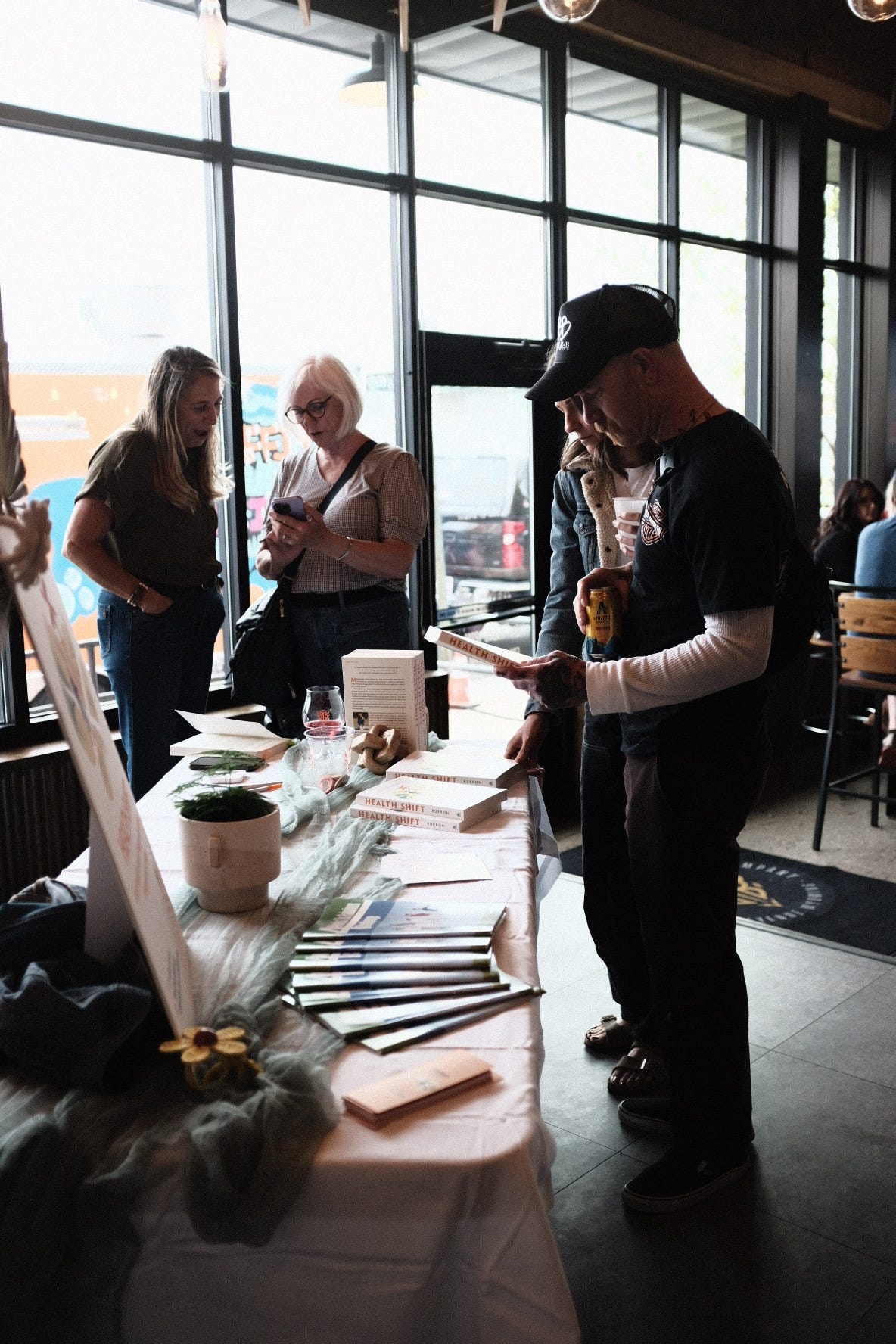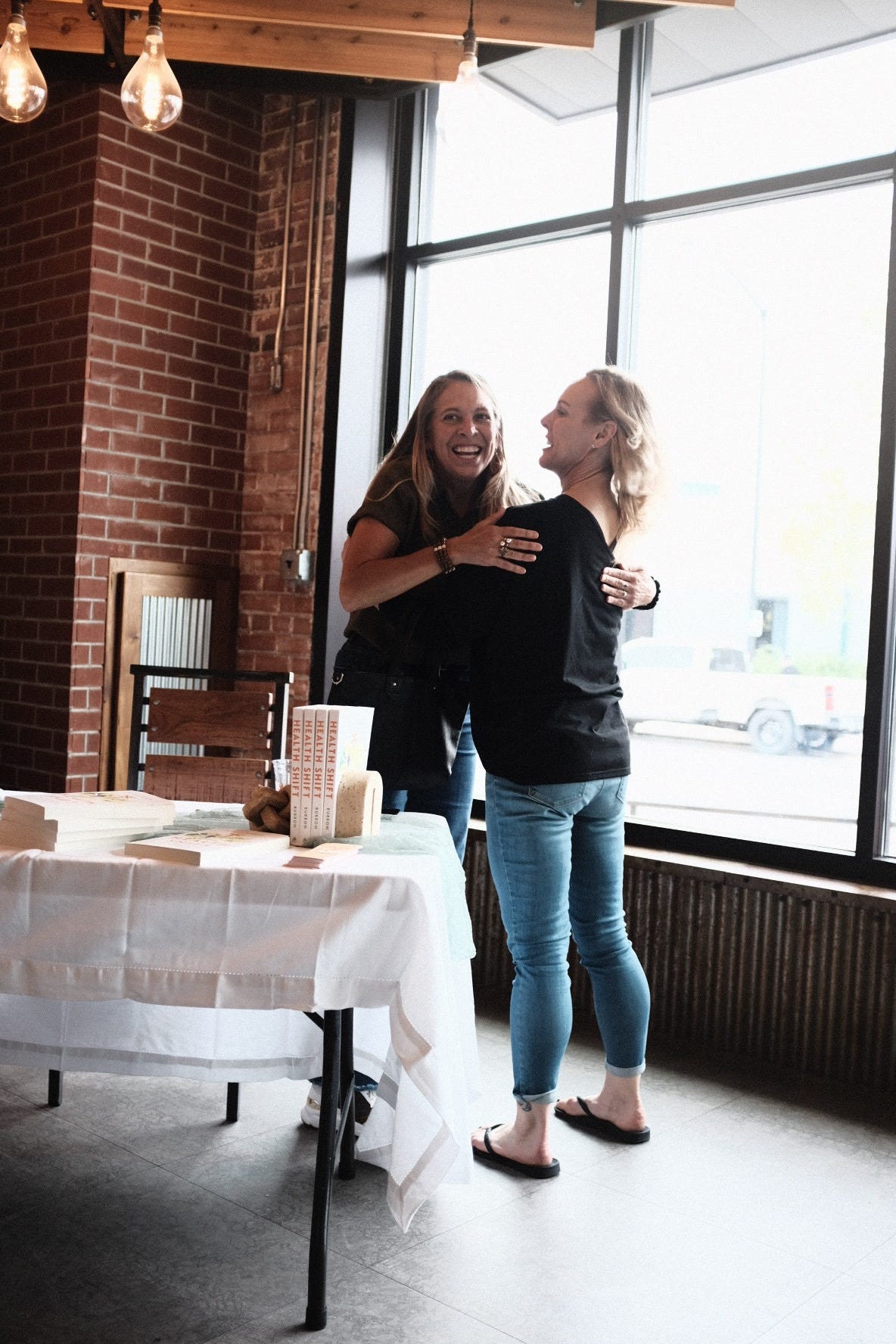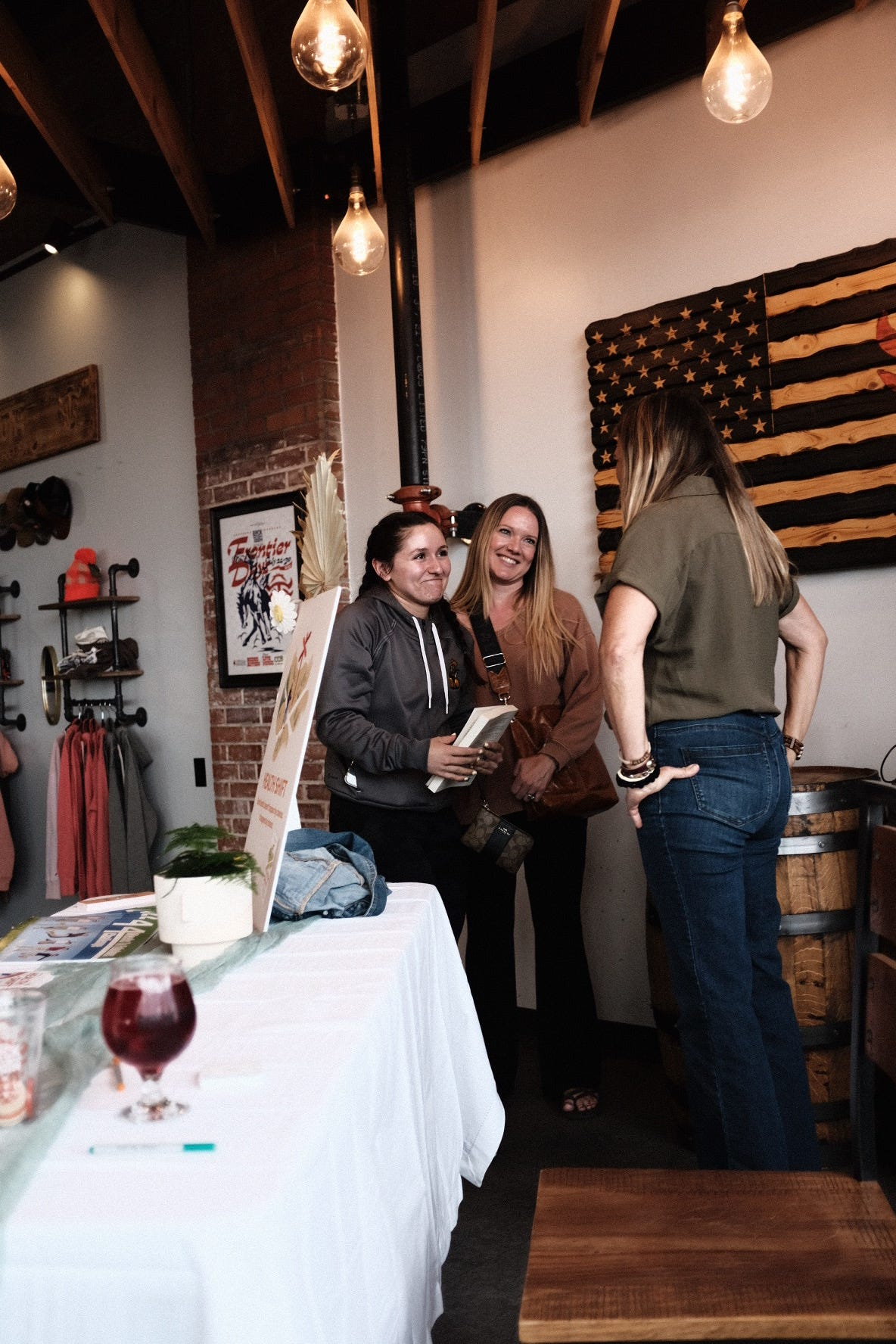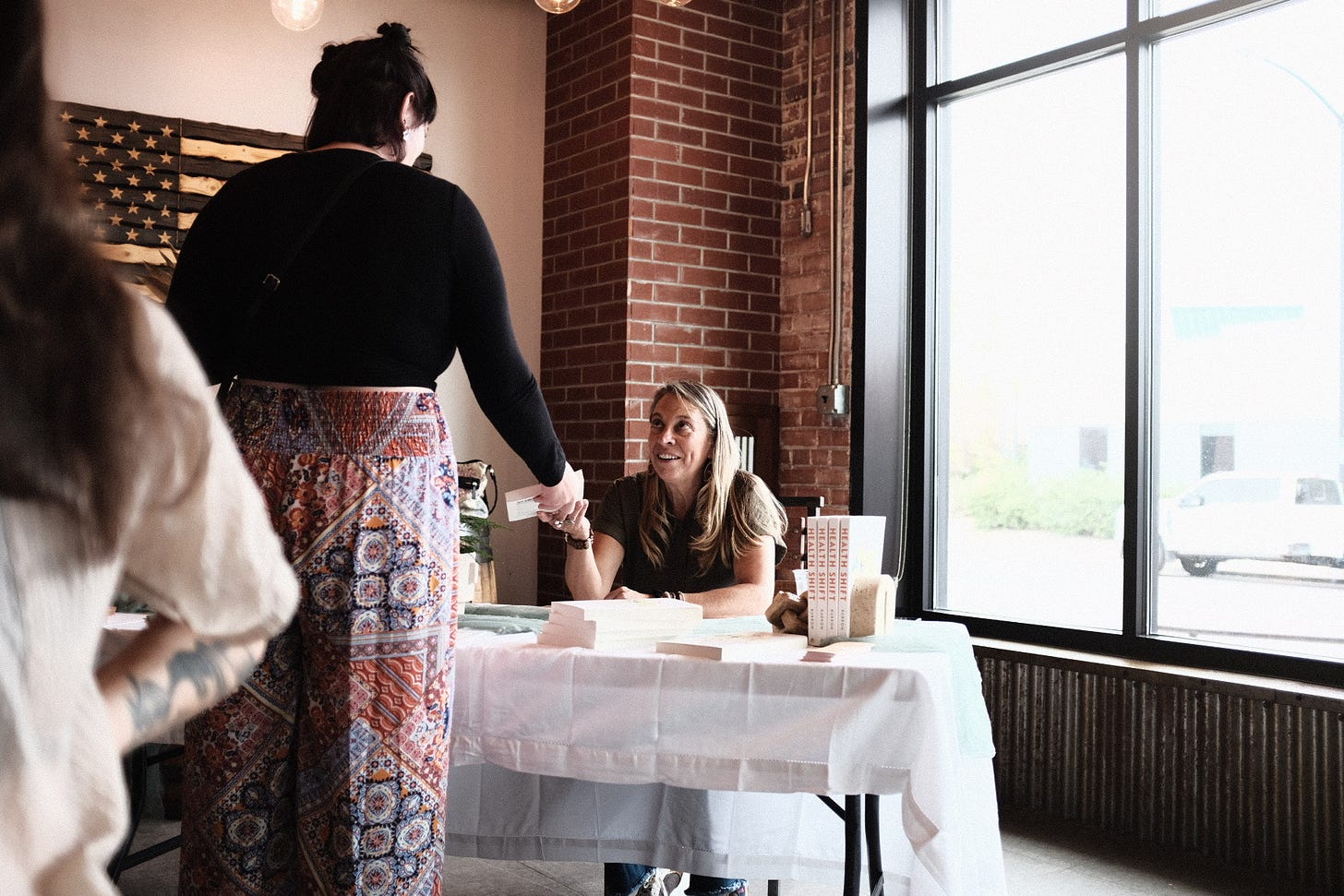Isolated and Fortified: Our Culture’s Curious Obsession with Piecing Apart Our Food
The state of our full-blown food identity crisis.
Let’s play a little game of pretend.
Imagine sitting down to a beautiful, bright bowl of fruit—juicy blueberries, mango slices, kiwi, banana. You're getting vitamins, minerals, fiber, water, phytonutrients, enzymes, and colors that practically scream, “This is what health looks like!” Now imagine instead someone handing you a clear glass of water with synthetic vitamin C and E squirted into it, a dash of zinc, maybe some powdered fiber—shake and drink. Technically, they’ve recreated the nutritional profile. But is it the same?
Welcome to the age of isolates—the cultural phenomenon of breaking foods down to their smallest parts, repackaging them, and pretending we’ve replicated the original, or even made it more effective and better for us than the natural.
This isn’t just modern science flexing its chemistry muscles. It’s an ethos quandary. A food philosophy conundrum. And, quite frankly, I think it’s a full-blown food identity crisis.
From Root to Refined: Is It a Sweet Story?
Let’s take sugar as our poster child for this trend. Sugar comes from sugar beets or sugarcane. You know, plants—living, breathing, photosynthesizing living things with nutrients, fibers, and complex systems. But rather than consuming the whole plant or even a minimally processed version, we extract the sucrose and toss the rest. Then we sprinkle it into nearly every processed food you can imagine—from cereal to spaghetti sauce. We’ve gone from chewing on a plant to guzzling its extracted molecules.
And here’s the kicker: we cheer this on. It's in our language. Foods are now “fortified, " "enhanced,” and “contain extract of XYZ.” This isn’t nutrition! This is marketing meets molecular dissection.
In your pantry right now, I’d bet at least one product claims to have “added vitamins and minerals.” Sounds noble, right? But let’s pause and ask: from where? Who made those minerals? Were they mined from soil or built in a lab? Were they tested for efficacy in the human body, or just approved for not being overtly toxic in low doses?
And what happens when these isolates are added back into food-like products that never had them in the first place? We’ve turned food into Lego pieces—take apart, rearrange, and snap together into new and unfamiliar forms. Presto! It’s now a “health drink.”
Caffeine, Coca, and the Case of the Missing Plant
Here’s another peek behind the curtain: caffeine. In its natural home—coffee beans or tea leaves—it’s bundled up with antioxidants and plant compounds that modulate its effect. It comes with context. With culture. With ritual. But now, we isolate caffeine, concentrate it, and plunk it into neon-colored beverages that fizz with mystery and jittery regrets. It’s caffeine, sure—but is it coffee?
Or take coca leaves in Bolivia. For generations, people have chewed them for gentle energy and pain relief. But once the active alkaloid—cocaine—was extracted and abused elsewhere, the plant itself got demonized. We isolated a single compound and erased the wisdom of the whole. Pop a poppy seed bagel into the same story—one minute it’s brunch, the next it’s part of a narcotics screening protocol.
We’ve gone from celebrating plants to prosecuting them, simply because we pulled out a piece and misused it.
The Art of Building With Food (Not Just From It)
Let me be clear: I don’t live in a log home, grinding barley by hand, and milking my cow (although that sounds nice!) I love a good baked good, and I cook plenty of them. I believe in culinary creativity (which my daughter, Chef Erin Tarectecan, is the master of!). But there’s a world of difference between making a cake with real flour, eggs, sugar, and butter—ingredients you can see, name, and buy at a market—and making a snack bar whose label reads like a chemistry exam.
One is food crafted from food. The other is a science experiment dressed up in faux fruit flavor.
Even flour and oil, as processed as they are, still come from something natural—wheat, olives, corn. But it's a different game entirely when you go a few steps deeper—breaking molecules apart, spinning them in centrifuges, and spraying them back into liquids on a bottling line.
We’ve taken the magic of food and distilled it into fragments. We’ve become so obsessed with the parts that we’ve forgotten the power of the whole.
Is This Just Us?
It’s worth asking—is this just a Western thing? Because it sure feels like we’ve gone full Frankenstein on food here.
Other cultures still revere the whole. In many Indigenous communities, food is sacred, unprocessed, and relational. Even in parts of South America or Asia, where modern convenience has crept in, meals are often prepared from real ingredients with minimal meddling. There’s less obsession with additives and more focus on tradition, preparation, and taste. It’s not perfect, but it’s a stark contrast.
On the other hand, we sip protein water, chew fiber gummies, and swallow vitamin-enriched sports drinks while wondering why we’re still tired and hungry.
The Real Question: What Are We Eating?
So what does this mean for us—modern humans who are busy, resourceful, and trying to make sense of food in a sea of additives?
Here’s the simple truth with a little scientific nudge: when we eat whole foods, we don’t just get nutrients—we get synergy. Nutrients work together, fibers slow digestion, and enzymes help absorption. We get taste, texture, satisfaction, and sometimes even joy. We can't expect the same results when we isolate a compound and take it out of context. It’s like reading one sentence of a book and thinking you understand the plot.
While I’m not slamming supplements or fortified foods (they can be helpful in the right context), I am saying we should pause and ask: Is this food, or is it fragments? And is the fragment helping us or replacing something far more nourishing?
A Call to Curiosity (Not Perfection)
I’m not here to guilt you out of your electrolyte packet or flavored drink. I’m here to spark curiosity. To help you zoom out and see the absurdity of a system that tells us a strawberry-flavored vitamin drink is the same as a bowl of berries.
Let’s begin asking better questions. Where did this come from? What’s in its natural form? Could I eat the real version instead?
And let’s give ourselves permission to be amazed, not ashamed. What we’ve figured out is incredible—extracting sweetness from beets, turning plants into powders. Go, humans! But let’s also remember that sometimes, the best solution isn’t the most engineered—it’s the one nature already made.
So next time you choose between a “fortified vitamin blend” and a handful of almonds, maybe reach for the almonds—not because you should, but because your body might recognize them as a friend.
And that’s the health shift—less about eliminating all isolates, and more about reconnecting with food as a whole.
Thanks for reading today! And a GIGANTIC thank you to everyone who came to the book release party on Saturday — it was an incredible time, and I am so grateful to everyone who bought a book. We made the Top 10 across 4 separate Amazon categories — very fun!
If you don’t have your copy yet, you can find it here, or online wherever books are sold.
See you on Thursday, health heroes.
Dr. Alice
Bonus: some photos from the book signing!
A little more about Dr. Alice Burron and Strategic Action Health:
Dr. Burron is a co-founder of Strategic Action Health, dedicated to helping organizations help their employees make better health decisions. Come check us out here!
Catch us on Instagram: @the.health.navigator and @dr_burron
You can also connect on LinkedIn, if you want to be professional about it. 👓
And if you’re not subscribed to Health Shift here on Substack — it’s time! This free newsletter is packed with valuable information and approaches to help you on your journey to better, faster healing.














